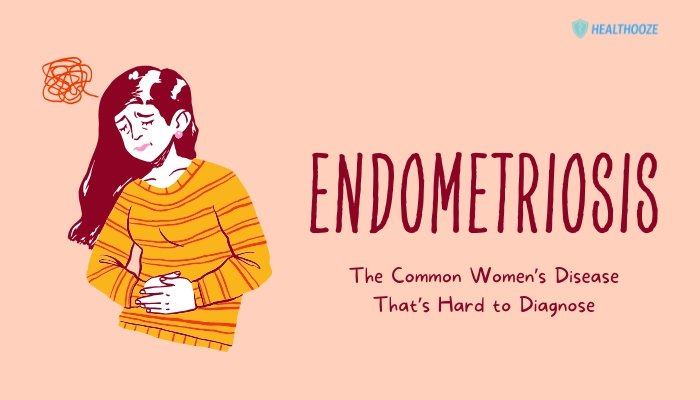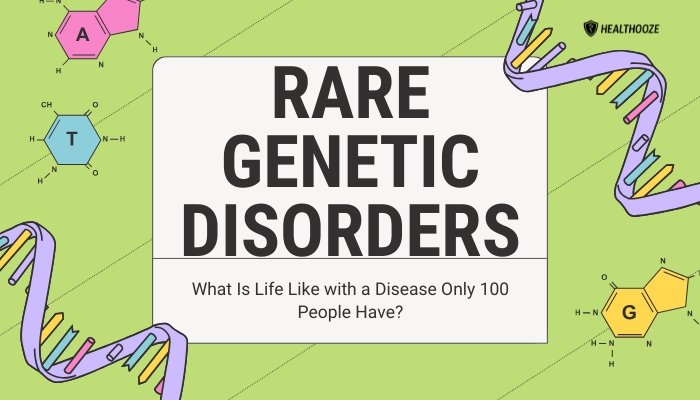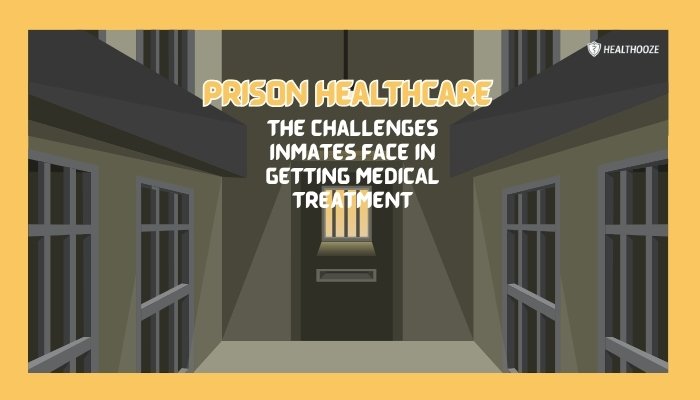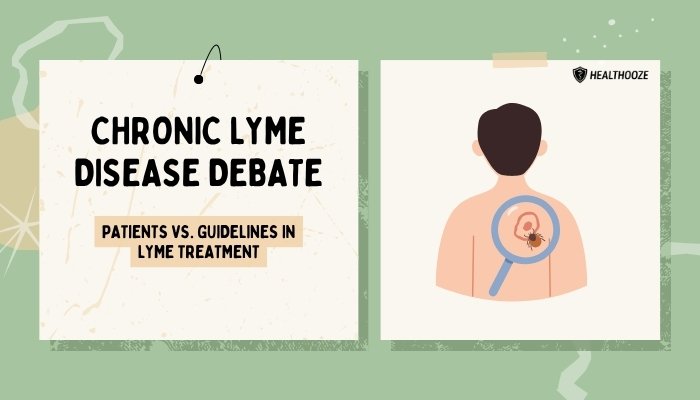Introduction
Endometriosis is a chronic gynecological condition that affects an estimated 1 in 10 women of reproductive age, although exact prevalence figures may be higher due to underdiagnosis. Despite its frequency, it remains widely misunderstood or overlooked, leading to delayed diagnoses and prolonged suffering for many.
The hallmark feature of endometriosis is the growth of endometrial-like tissue outside the uterus—on organs such as the ovaries, fallopian tubes, pelvic lining, or even more distant sites like the intestines or lungs. This misplaced tissue can thicken, break down, and bleed with each menstrual cycle, resulting in inflammation, pain, and scar formation.
Endometriosis can wreak havoc on daily life, interfering with work, education, and personal relationships. Infertility is also a concern for some, prompting both emotional distress and practical challenges in family planning.
Yet despite these profound impacts, many patients face a lengthy journey—averaging around 7 to 10 years—to receive an accurate diagnosis. This article delves into endometriosis’s causes, manifestations, diagnostic hurdles, and treatments, emphasizing the need for greater awareness and better care.
Understanding Endometriosis
What Exactly Is Endometriosis?
In a normal menstrual cycle, tissue lining the uterus (the endometrium) thickens and then sheds if fertilization does not occur, leading to menstruation. In endometriosis, cells similar to those found in this uterine lining appear elsewhere in the body, typically in the pelvis. These cells behave as they would in the uterus: they build up and then break down with the menstrual cycle. However, because they are outside the uterine cavity, the blood and debris cannot easily exit the body, leading to irritation, adhesion formation, and local inflammation.
The Scale of the Problem
- High Prevalence: Globally, tens of millions of women live with endometriosis. Many remain undiagnosed or misdiagnosed.
- Socioeconomic Burden: Chronic pelvic pain, fatigue, and fertility complications significantly reduce quality of life and can affect productivity, imposing indirect costs on individuals and communities.
- Time to Diagnosis: An average diagnostic delay of several years is often attributed to stigma, normalization of period pain, and variability in clinical presentation.
Myths and Misconceptions
- “Excruciating Period Pain Is Normal”: Painful menstruation is common, but severe, debilitating pain is not something to tolerate without investigation.
- “It’s Just a Reproductive Issue”: While endometriosis primarily involves pelvic organs, it can affect the entire body, with lesions found in remote areas like the diaphragm or lungs in rare cases.
- “Menopause Cures Endometriosis”: Menopause may reduce hormonal influences, but some patients still experience symptoms post-menopause. Endometriosis can also persist on hormone replacement therapy.
Signs and Symptoms
Pelvic Pain and Cramping
- Dysmenorrhea: Painful periods represent the most frequent symptom, often intensifying over time.
- Chronic Pelvic Discomfort: Some patients feel persistent aches or stabbing sensations in the lower abdomen, not always confined to menstrual days.
- Lower Back or Leg Pain: Nerves in the pelvis can be affected, generating referred pain.
Pain During Intercourse (Dyspareunia)
Involvement of the uterosacral ligaments or tissues deep in the pelvis can cause sharp discomfort or burning sensations during sex. This can strain relationships, fueling emotional stress and potentially reducing intimacy.
Gastrointestinal Upset
- Bloating and Constipation: Tissue infiltration near the bowel may worsen or mimic irritable bowel syndrome (IBS)-like symptoms.
- Painful Bowel Movements: Lesions in the rectovaginal area might lead to painful defecation, especially around periods.
Urinary Symptoms
- Painful or Frequent Urination: Lesions on or near the bladder can irritate urinary tracts, causing urgency, pain, or perceived UTIs.
- Blood in Urine (rare): In advanced or deeply infiltrative endometriosis, ureter or bladder involvement might lead to hematuria.
Fertility Issues
- Difficulty Conceiving: Inflammatory damage or anatomical distortions (e.g., blocked fallopian tubes, ovarian cysts) hamper conception. Some women only discover they have endometriosis after seeking help for infertility.
Challenges in Diagnosis
Normalizing Period Pain
Culturally, heavy cramping is frequently dismissed as typical. Patients themselves may internalize the belief that extreme discomfort is part of menstruation, postponing medical evaluations.
Non-Specific Symptoms
Symptoms can resemble those of other conditions like pelvic inflammatory disease, IBS, or urinary tract disorders. General practitioners might treat these superficial signs without exploring endometriosis, contributing to missed or delayed diagnoses.
Limitations of Imaging
- Ultrasound: Transvaginal ultrasound can identify larger endometriotic cysts (endometriomas) on ovaries but might miss smaller lesions or more diffuse infiltration.
- MRI: A more sensitive imaging method, though not universally available or used as a primary screening tool.
Laparoscopy as the Gold Standard
A definitive diagnosis generally necessitates a laparoscopic procedure (minimally invasive surgery) to visualize lesions directly, sometimes performing a biopsy. However, cost, surgical risks, and the need for specialized expertise often deter or delay this approach.
Impact on Quality of Life
Physical Toll
Relentless pain diminishes the ability to carry out daily tasks, exercise, or maintain stable employment. Exhaustion from frequent discomfort exacerbates the burden.
Emotional and Mental Health
- Depression and Anxiety: Ongoing pain, hormonal fluctuations, and the uncertainty of living with a chronic condition fuel mental health struggles.
- Body Image Concerns: Bloating, scarring from surgeries, or changes in sexual function can lead to self-consciousness and social withdrawal.
- Stress from Infertility: The heartbreak of repeatedly failed attempts at conception can intensify emotional distress.
Social and Relationship Strain
- Partner Understanding: Dyspareunia or exhaustion may reduce intimacy, and repeated cancellations or mood shifts can strain relationships if not well-communicated.
- Work Absenteeism: For some, severe flare-ups necessitate frequent days off, risking job security and financial stability.
Treatment Strategies
Medical Management
- Hormonal Therapies: Birth control pills, progestin-only devices (IUDs or implants), GnRH agonists, or antagonists can suppress estrogen levels, limiting lesion growth and pain.
- Pain Relievers: NSAIDs or prescribed analgesics for managing acute flare-ups.
- Newer Drugs: Selective progesterone receptor modulators (SPRMs) or GnRH antagonists show promise in balancing efficacy and side effects.
Surgical Interventions
- Laparoscopic Excision or Ablation: Surgeons remove or burn away endometriotic lesions, improving pain and potentially enhancing fertility.
- Hysterectomy: A more drastic option if other measures fail or if quality of life is severely compromised. May not always guarantee symptom relief, especially if endometriosis extends beyond the uterus.
- Adhesion Removal: Laparoscopic surgeries can also free up pelvic organs bound by adhesions, easing pain or improving reproductive outcomes.
Complementary Approaches
- Physical Therapy: Pelvic floor therapy can mitigate muscle tension, easing pelvic pain and enhancing mobility.
- Dietary Adjustments: Though evidence varies, some find relief by reducing inflammatory foods or adopting diets rich in anti-inflammatory nutrients.
- Stress Management: Techniques like yoga, mindfulness meditation, or counseling help cope with chronic pain and reduce stress-induced symptom aggravation.
Fertility Support
- Assisted Reproductive Technologies (ART): In cases of difficulty conceiving, IVF or other fertility treatments might bypass compromised reproductive structures.
- Fertility Preservation: Younger patients sometimes freeze eggs or embryos if repeated surgeries or advanced disease threatens ovarian reserve.
Breaking the Silence and Stigma
Raising Awareness
- Public Education: Health campaigns highlighting that severe period pain or cyclical pelvic pain is not “normal” encourage prompt medical evaluations.
- Media Representations: Documentaries, personal blogs, or celebrity advocacy (e.g., high-profile actresses disclosing endometriosis) can dismantle taboos and spur research funding.
Building Healthcare Capacity
- Trained Professionals: Ensuring general practitioners, gynecologists, and allied specialists can recognize the signs of endometriosis and expedite referral pathways.
- Multidisciplinary Clinics: Integrating gynecology, pain management, physiotherapy, and mental health professionals fosters well-rounded treatment.
Community Support Networks
- Peer Support Groups: Online and in-person communities reduce isolation, share coping strategies, and exchange practical advice on workplaces, diet, or dealing with flare-ups.
- Nonprofits and Advocacy: Charitable organizations fight for policy changes, improved insurance coverage for surgeries, or mandated coverage for advanced therapies.
Coping and Self-Advocacy Tips
Personal Health Strategies
- Tracking Symptoms: Keeping a pain and symptom diary to identify potential triggers (stress, dietary elements) and demonstrate patterns to providers.
- Gentle Exercise: Activities like yoga, swimming, or walking can reduce stress and muscle tension, though intense workouts may aggravate pain for some.
- Relaxation Techniques: Guided breathing, progressive muscle relaxation, or warm baths can offer temporary pain relief.
Effective Communication with Providers
- Prepare Questions: Listing concerns before appointments ensures thorough discussions.
- Push for Diagnostic Tests: If suspicions arise, request imaging or referrals to specialists. Early detection of endometriosis fosters better outcomes.
- Seek Second Opinions: If care feels dismissive or insufficient, exploring alternative experts is beneficial, especially for complex or advanced disease.
Workplace and Relationship Strategies
- Flexible Scheduling: Talking with employers about occasional remote work or extended breaks during severe episodes.
- Partner Involvement: Inviting partners to medical consultations can improve mutual understanding and emotional support.
- Assertive Boundaries: Setting limits on social obligations or family events if pain becomes overwhelming, preserving energy for critical tasks.
Conclusion
Endometriosis is far from rare, yet it remains a silent affliction for countless women forced to downplay their pain or spend years seeking answers. The complexity of endometriosis, with its range of symptoms and possible complications—especially infertility—underscores why early detection and comprehensive treatment are vital. Traditional taboos around “women’s pain” or the normalization of severe menstruation further hinder prompt care. However, awareness is surging: from stronger advocacy efforts and improvements in diagnostic imaging to ongoing innovations in medical therapies.
By encouraging open, supportive discussions—among patients, family members, and healthcare professionals—communities can validate sufferers’ experiences, expedite diagnoses, and foster treatments that address both physical and emotional needs. Ultimately, for every woman enduring hidden agony, the combined power of knowledge, empathy, and advanced care can ensure a more hopeful future, free of undue stigma and relentless pain.
References
-
- World Health Organization (WHO). Endometriosis. 2021.
-
- Adamson GD, Kennedy S, Hummelshoj L. Creating solutions in endometriosis: global collaboration through the World Endometriosis Research Foundation. J Endometr. 2010;2(1):3–6.
-
- Zondervan KT, Becker CM, Koga K, et al. Endometriosis. Nat Rev Dis Primers. 2018;4:9.
-
- Vercellini P, Viganò P, Somigliana E, et al. Endometriosis: pathogenesis and treatment. Nat Rev Endocrinol. 2014;10(5):261–275.
-
- Dunselman GA, Vermeulen N, Becker C, et al. ESHRE guideline: management of women with endometriosis. Hum Reprod. 2014;29(3):400–412.
-
- Taylor HS, Giudice LC, Lessey BA, et al. Treatment of endometriosis: a multidisciplinary approach. Fertil Steril. 2020;113(3):556–557.
-
- Burney RO, Giudice LC. Pathogenesis and pathophysiology of endometriosis. Fertil Steril. 2012;98(3):511–519.
-
- Bulletti C, Montini A, Setti PL, et al. Pathophysiology of endometriosis: from the molecular basis to the future perspectives for diagnosis and treatment. Minerva Ginecol. 2010;62(6):549–567.
-
- Parasar P, Ozcan P, Terry KL. Endometriosis: Epidemiology, diagnosis and clinical management. Curr Obstet Gynecol Rep. 2017;6(1):34–41.
-
- Laufer MR, LeBlanc DM, Kives S. A collaborative approach to the treatment of adolescents with endometriosis in a tertiary care setting. J Pediatr Adolesc Gynecol. 2012;25(5):292–295.
-
- Vigano P, Parazzini F, Somigliana E, et al. Endometriosis: epidemiology and aetiological factors. Best Pract Res Clin Obstet Gynaecol. 2004;18(2):177–200.
-
- Moradi M, Parker M, Sneddon A, et al. Impact of endometriosis on women’s lives: a qualitative study. BMC Womens Health. 2014;14:123.







